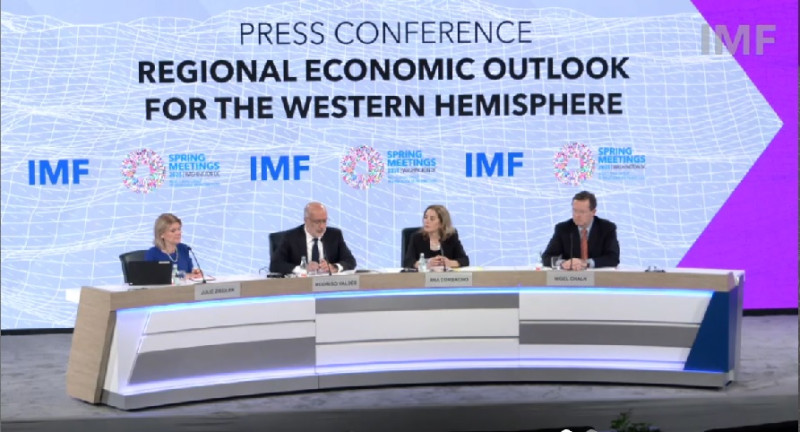According to data from its report on the Economic Outlook for the Western Hemisphere, the International Monetary Fund (IMF) ranks the country as the second fastest-growing economy in the world for 2026.
The report reveals that the Dominican Republic will achieve 4.8% growth in its gross domestic product (GDP) in 2026, well above other countries and all regions of North America, South America, Central America, and Latin America, except the Caribbean and Caribbean countries not dependent on tourism.
By the end of 2025, the IMF projects that the country’s GDP wcountry’s0%, only below Argentina, which will grow by 5.5%, but next year, the DR will increase by 4.8% and Argentina by 4.5%.
In its regional report, the IMF indicates that consumption has been the main driver of economic activity in the region and that investment remains weak. It forecasts that growth will moderate from 2.4% in 2024 to 2.0% in 2025, “while long-term obstacles continue to hold back growth in the medium term.”
“It remains crucial to undertake timely fiscal consolidation to rebuild policy space, as the scope for monetary policy easing is shrinking and the changing global environment poses new challenges,” it says.
By 2″26, Panama will grow 4%, Guatemala 3.8%, Honduras 3.4%, Nicaragua 3.1%, Costa Rica 3.4%, and El Salvador 2.5%. According to IMF projections, Haiti will grow by 1% in 2026 after declining by -1 % this year.
The economic update report projects growth of 3.8% and 3.9% for the Central American region in 2025 and 2026.
Press conference
Rodrigo Valdés said that US tariffs are a headwind for Caribbean countries with strong tourism, but they are not concerned because there have been no reservation cancellations.
He answered questions about Argentina and emphasized that the managing director had made it clear that elections are for a country and not for the Fund, so it is necessary to continue with the policies and that the government must stay on the current path.
He maintained that the Fund’s program Fund’sgentina resulted from a rigorous assessment by Fund staff and the board, reflecting the commitment to stabilizing reforms.
With regard to Chile, he stressed that after debt increased this year in Chile, it would be important to put debt back on a downward path. The country has already committed to doing so and has created a short-term strategy, in addition to respecting its debt ceiling, “which is commendable.”
He indicated “that for this year, the Fund has seen that it is logical to soften the adjustment by shifting the timetable slightly, but they note that measures of 1.5% will be needed for the 1.5% adjustment. These have been announced and discussed, but the agency needs time to understand the timing and timing of these steps through careful assessment. He suggests adjusting revenue and expenditure results.
Migrants and remittances
Rodrigo Valdés explained that the Latin American and Caribbean region will see moderate average growth of 2%, compared to 2.4% in the previous report and 2.5% expected six months ago. IMF officials referred to the negative impact of US tariff measures, mainly on Mexico and Brazil. They see complex and highly volatile factors that could affect demand. In addition, there could be a drop in the flow of migrants and remittances. (https://dominicantoday.com/dr/local/2025/04/26/the-dominican-republic-will-achieve-the-highest-economic-growth-in-the-world-in-2026-with-the-exception-of-the-caribbean/)



































